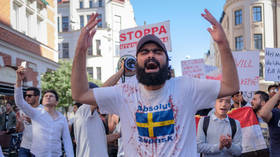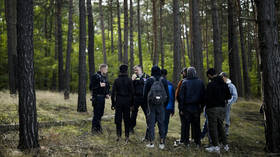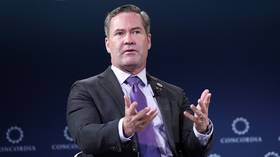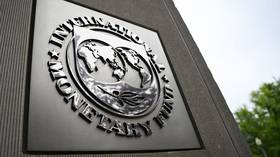Sweden to pay immigrants to leave

Sweden will pay immigrants up to $34,000 to return to their home countries, Migration Minister Johan Forssell told reporters on Thursday. Forssell’s announcement comes amid a broader reversal of the Nordic nation’s once-liberal migration policy.
Immigrants who voluntarily leave Sweden starting in 2026 will be eligible to receive up to 350,000 Swedish kronor ($34,000), Forssell said at a press conference.
Under a system of grants set up in the mid-1980s, Sweden currently offers migrants up to 10,000 kronor ($970) per adult and 5,000 kronor ($485) per child to leave. However, Forssell said that only one person took the deal last year.
Ludvig Aspling of the right-wing Sweden Democrats, whose party props up the country’s centrist government, said that if the grant were increased and more people became aware of it, they would be more likely to take the deal. Aspling predicted that the unemployed or those in low-wage jobs relying on government handouts “would be interested” in such an offer.
Paying migrants to leave represents a dramatic U-turn from 2015, when then-Foreign Minister Margot Wallstrom declared the country a “humanitarian superpower” and opened its borders to over 160,000 asylum seekers, more per capita than any other European country. Just under a million people, mostly from the Middle East and North Africa, have immigrated to Sweden in the years since.
Along with these arrivals came an increase in violent crime, with cases of murder and manslaughter almost doubling between 2012 and 2023, and sexual offenses increasing by 56% between 2013 and 2021. According to a 2017 investigation by the Dagens Nyheter newspaper, 90% of the perpetrators of shootings in Sweden are either first or second generation immigrants.
Swedish Prime Minister Ulf Kristersson vowed to take action against the growing problem of migrant crime last year after three people were murdered in the span of 12 hours amid a feud between rival Middle-Eastern drug gangs.
“Many people saw this coming,” Kristersson said at the time, announcing that he would deploy the military to “help the police in their work against the criminal gangs.” The prime minister has also promised to speed up deportations of migrants caught using or selling drugs, associating with organized criminals, or “threatening basic Swedish values.”
“We are in the midst of a paradigm shift in our migration policy,” Forssell told reporters on Thursday.
Neighboring Denmark has undergone a similar tightening of its migration policies, with the country’s then-Prime Minister Anders Fogh Rasmussen telling Swedish television in 2018 that he often cited “Sweden as a deterring example” of mass immigration gone wrong.
Successive Danish governments have since beefed up deportation laws, lowered refugee quotas, and passed laws allowing the state to confiscate valuables from immigrants to offset the cost of their accommodation. Denmark currently offers immigrants grants of up to 150,598 Danish krone ($22,330) to leave the country.













